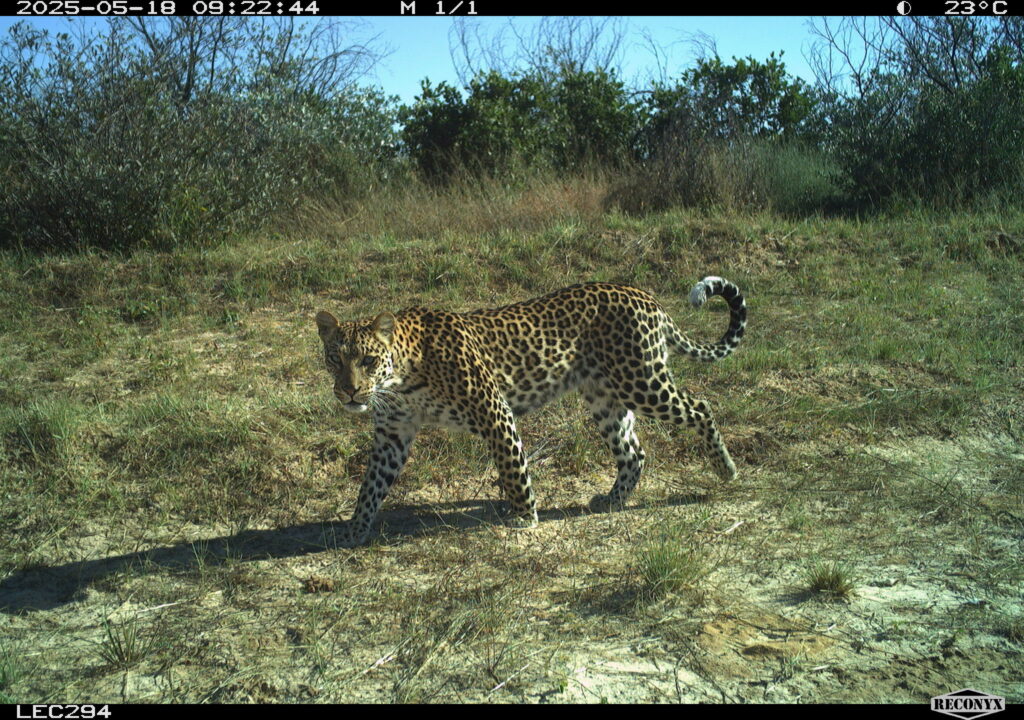Why Leopard Monitoring Matters
Leopards are among the most elusive big cats in Africa. They thrive in many landscapes, yet their secretive nature makes them difficult to study. In Botswana’s Kalahari, leopard densities are thought to be relatively low compared to other ecosystems, and this presents unique challenges for conservation. Reliable data on leopard numbers and movements are essential for informed decision-making—whether for managing protected areas, guiding national strategies, or reducing conflict with people living at the edges of reserves.
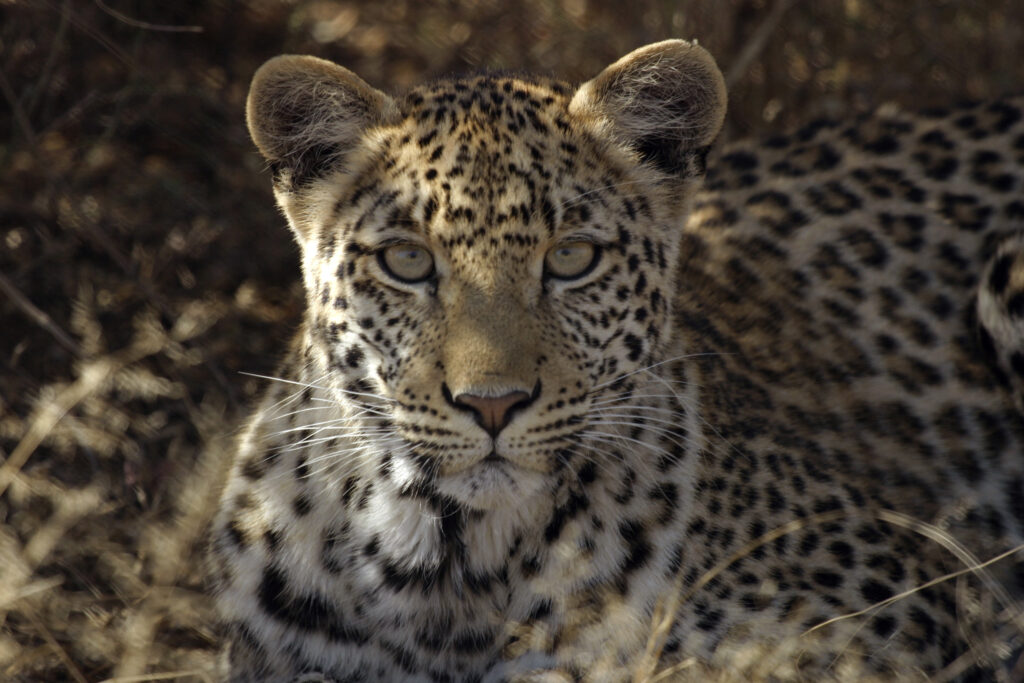
The Leopard Density Study at Leopard Ecology & Conservation (LEC) answers this need by using one of the most effective tools available today: camera traps. These devices operate day and night, silently capturing images of passing animals. Unlike traditional observation methods, camera traps allow for continuous monitoring without disturbing wildlife or altering their natural behavior. By focusing on leopards and other carnivores, the project is building a clearer picture of predator populations across Khutse Game Reserve (KGR) and beyond. The long-term vision is to generate robust population estimates and track changes over time, critical steps for ensuring the long-term survival of leopards in the Kalahari.
The Role of Camera Traps
Camera traps are motion-triggered cameras that take photographs when an animal passes in front of them. At LEC, we use camera traps equipped with flash technology, which provides high-quality color images even at night, when predators are most active. This detail is especially important for leopards, as their unique coat patterns, like fingerprints in humans, allow researchers to identify individuals with precision.
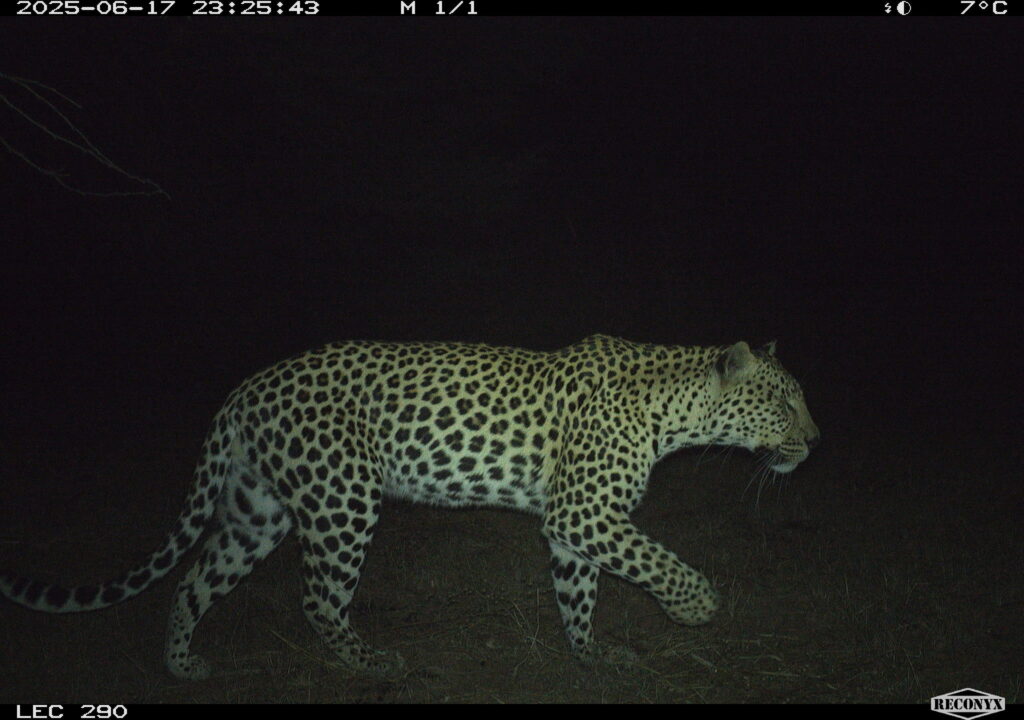
The survey design is based on a grid system, carefully calculated to cover the large, semi-arid study area effectively. Cameras are placed at intervals across thousands of square kilometers, often near waterholes, trails, or other natural features that animals regularly use. Each station may have one or two cameras, strategically positioned to capture both sides of an animal. This setup increases the likelihood of re-identifying the same leopard, which is crucial for building population models.
Because the study area has few roads and low wildlife densities, direct observation would not provide reliable estimates. Camera traps overcome this challenge by working around the clock, recording animals that would otherwise remain hidden. They also provide data on a wide range of other species, from prey animals to rare carnivores, adding value to the survey well beyond leopard monitoring.
Study Design and Implementation
The survey spans a vast area of more than 4,400 km², divided into four blocks. Two blocks are monitored simultaneously for 60 days before moving on to the next two. This phased approach ensures that coverage is both thorough and logistically manageable. Each block contains dozens of camera stations, with additional cameras deployed at hotspots like waterholes to maximize leopard detections.
To minimize disturbance, no baits or lures are used. Cameras are positioned about half a meter above the ground, angled toward game paths or open areas where animals are likely to pass. The devices are secured in protective cases, often with deterrents like thorn branches to prevent interference by elephants. Each camera is programmed to take sequences of photos when triggered, storing images on memory cards that are later retrieved and analyzed by the research team.
An important aspect of this study is its use of advanced data analysis. Images are first processed using an AI-driven platform called TrapTagger, which helps sort species efficiently. Uncertain identifications are then checked by LEC staff. For leopards, individual recognition is supported by specialized software such as African Carnivore Wildbook, which matches spot patterns across photographs. This combination of field expertise and modern technology ensures that the data are both accurate and reliable.
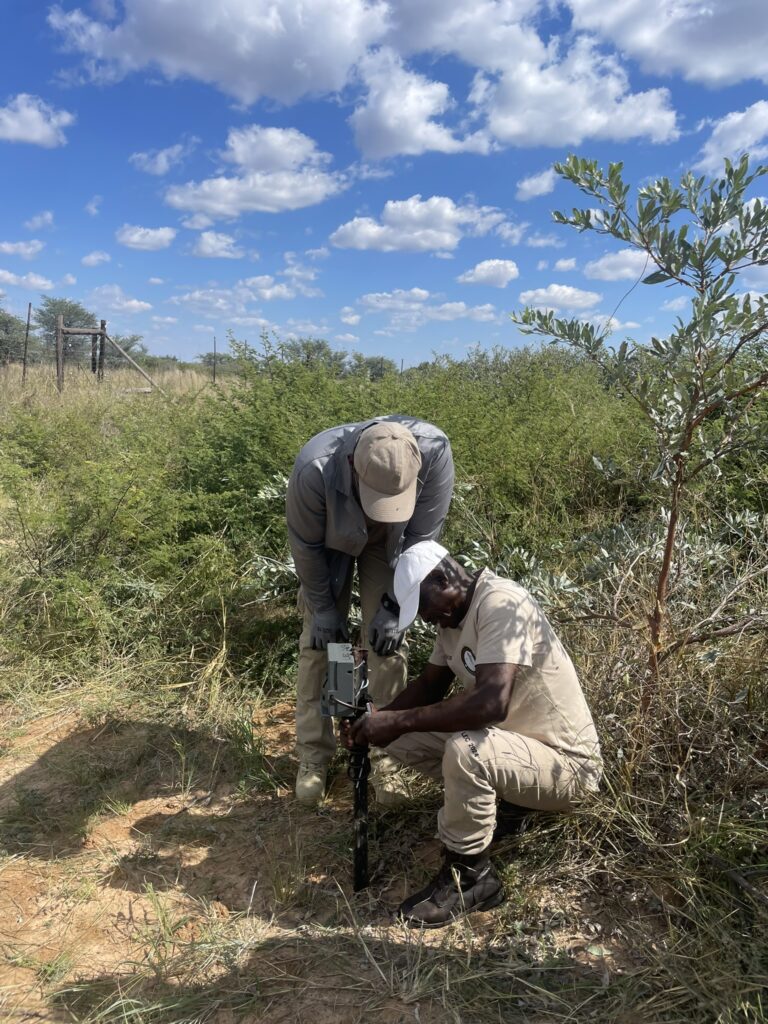
Leopards and Other Carnivores
Although leopards are the primary focus, the camera traps also record other carnivores such as lions, cheetahs, and hyenas. These “by-catch” images enrich the dataset, providing insights into predator communities as a whole. Knowing how different carnivores overlap in space and time helps us understand competition, prey use, and the broader dynamics of the ecosystem.
For example, if camera traps record increased leopard activity in areas with fewer lions, it may suggest that leopards adjust their behavior to avoid direct competition. Similarly, patterns of hyena presence can help explain carcass availability or scavenging behavior. These broader ecological insights are valuable for conservation, as they highlight the interconnectedness of species within the Kalahari landscape.
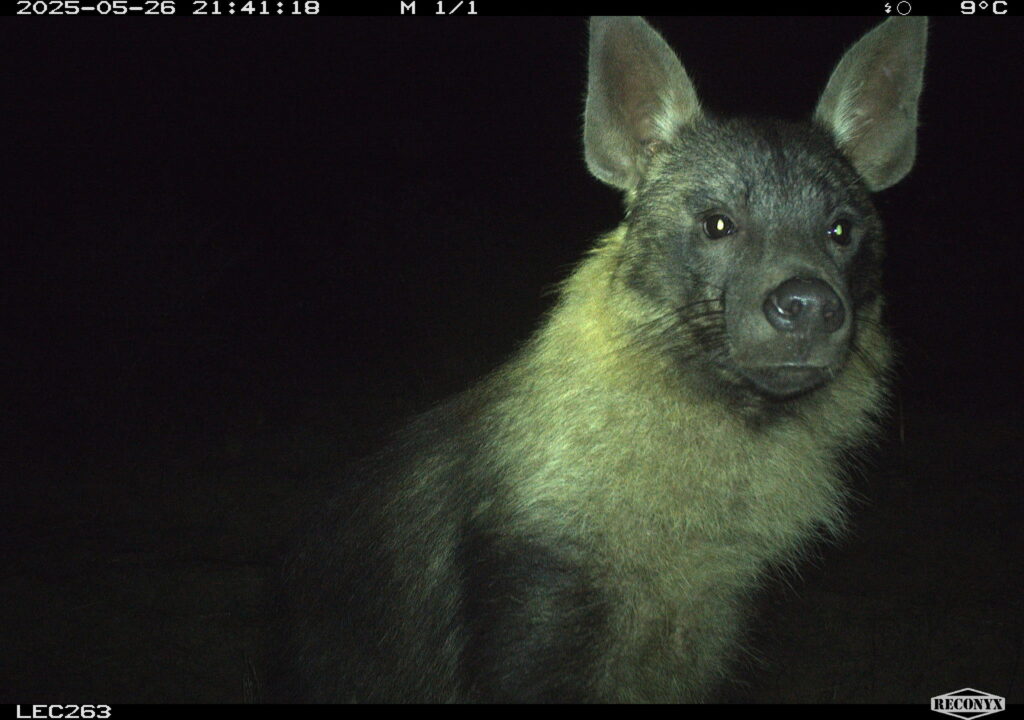
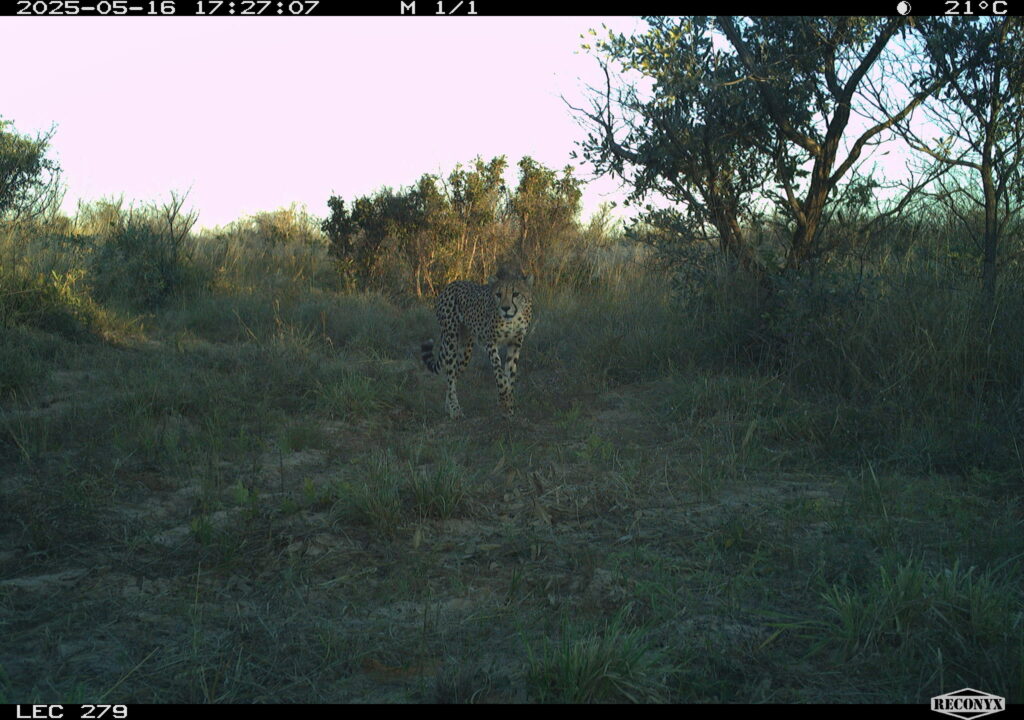
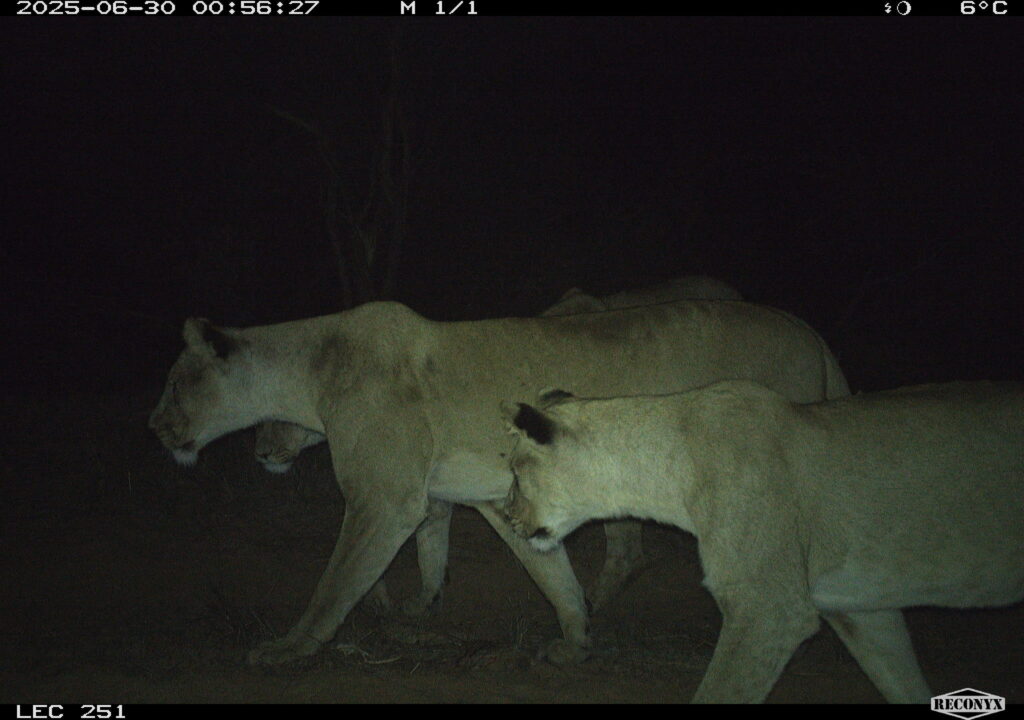
Linking to Conservation Goals
This study directly supports Botswana’s Leopard Management and Action Plan (2022–2027), which emphasizes the need for robust, science-based assessments of leopard populations. The camera-trap survey provides exactly that: standardized, repeatable data that can be compared across regions and years.
At the local level, findings help Khutse Game Reserve managers make informed decisions about predator conservation. At the national level, the data contribute to broader monitoring efforts, including the Department of Wildlife and National Parks’ National Leopard Survey. By aligning with these frameworks, the project ensures that its outputs are not just scientifically valuable but also directly useful for policy and management.
Progress and Next Steps
The camera-trap survey was successfully implemented in 2023, covering Khutse and the southern part of the Central Kalahari. In 2025, the survey was repeated to strengthen population estimates and assess any changes since the initial round. Repetition is vital for understanding whether leopard numbers are stable, increasing, or under pressure. Looking ahead, LEC plans to expand this work outside protected areas in 2026. By placing camera traps beyond the boundaries of Khutse, researchers will be able to assess how leopards use community lands where livestock and people are more present. This expansion is crucial for understanding human-wildlife coexistence and for designing strategies that reduce conflict while maintaining viable leopard populations.
